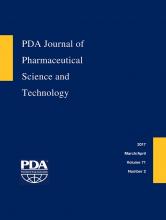Abstract
The analysis and accurate quantitation of bioconjugations proves challenging in the case of oligomeric proteins, especially when the size of the molecule or the nature of the conjugate do not allow the analysis of the intact protein under native conditions. In this case, analytical methods are frequently applied that result in a dissociation of non-covalently linked subunits. This limits the analysis to a description of individual subunits, thereby obscuring the accurate characterization of the overall functionalization. This situation is frequently encountered in the biopharmaceutically important case of protein PEGylation, as the biophysical properties of the PEG polymer generally make analysis and accurate quantitation for a protein with multiple conjugation sites challenging under native conditions. In this work we present a statistical measure for deriving the overall functionalization of an oligomeric protein from the data obtained from readily accessible assays that cause non-covalently associated subunits to dissociate. This approach is broadly applicable for the characterization and optimization of bioconjugation reactions for multimeric biomolecules. It should also be highly valuable for the accurate description of composition and manufacturing consistency of conjugated biotherapeutics in regulatory filings.
LAY ABSTRACT: Conjugated proteins are an important class of biopharmaceuticals. For these molecules, successful drug development requires accurate methods for the quantitative characterization of protein conjugation. This task is particularly challenging in the case of proteins consisting of several, non-covalently linked subunits, especially when the size of the protein or nature of the conjugate do not allow for analysis of the intact oligomeric molecule. Many of the analytical methods used to characterize these conjugates, such as reverse phase high-performance liquid chromatography, cause the individual subunits to dissociate, making it difficult to fully understand quality attributes at the native oligomeric level. We present a method to accurately quantify the overall conjugation of an oligomeric protein in these cases when readily available assays describe only individual subunits. This should be highly valuable for process optimization and to correctly characterize the conjugated biopharmaceutical in interactions with regulatory agencies.
- © PDA, Inc. 2017
PDA members receive access to all articles published in the current year and previous volume year. Institutional subscribers received access to all content. Log in below to receive access to this article if you are either of these.
If you are neither or you are a PDA member trying to access an article outside of your membership license, then you must purchase access to this article (below). If you do not have a username or password for JPST, you will be required to create an account prior to purchasing.
Full issue PDFs are for PDA members only.
Note to pda.org users
The PDA and PDA bookstore websites (www.pda.org and www.pda.org/bookstore) are separate websites from the PDA JPST website. When you first join PDA, your initial UserID and Password are sent to HighWirePress to create your PDA JPST account. Subsequent UserrID and Password changes required at the PDA websites will not pass on to PDA JPST and vice versa. If you forget your PDA JPST UserID and/or Password, you can request help to retrieve UserID and reset Password below.






